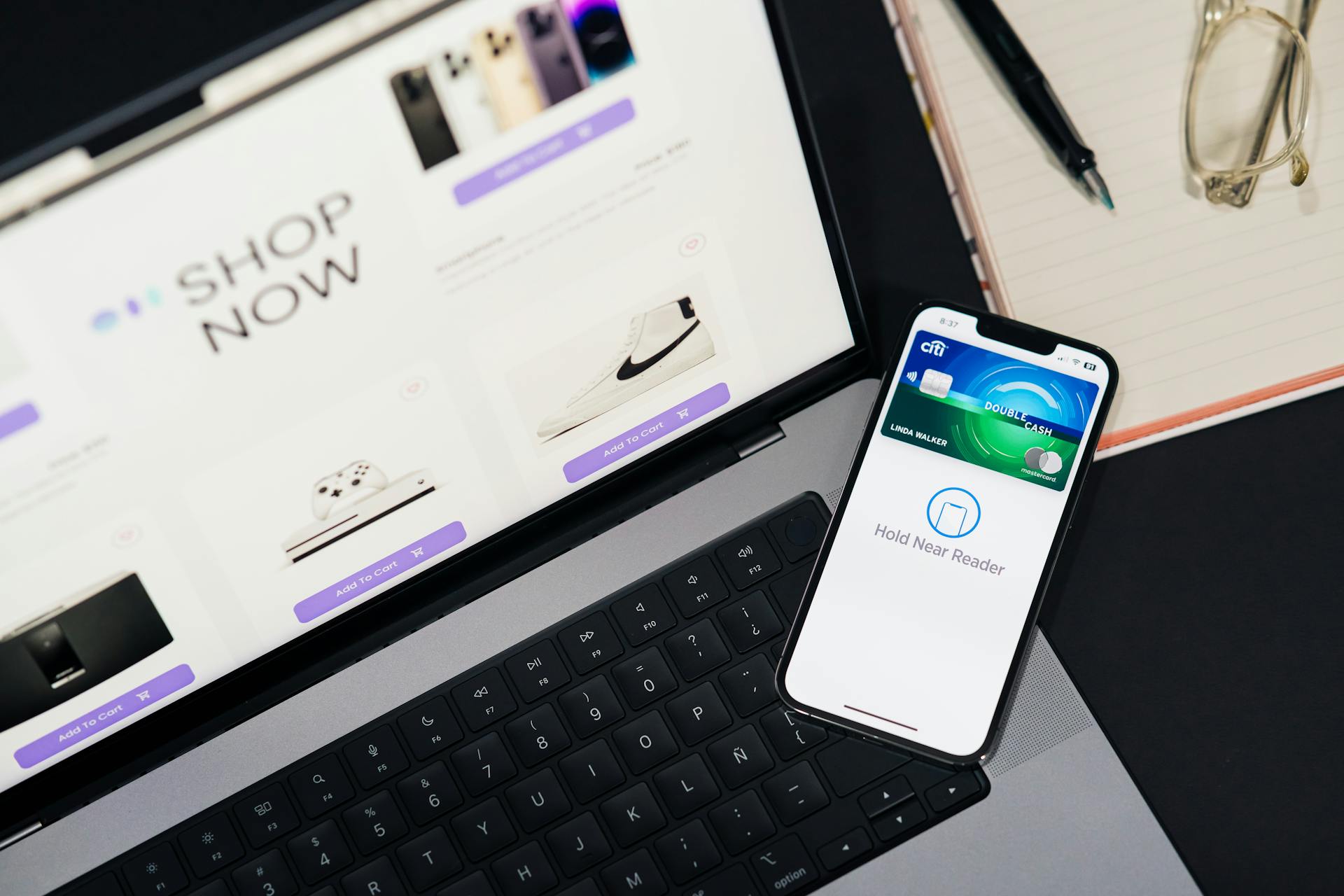Discover product recommendation best practices for Shopify. Learn how personalization, smart placement, and the right tools can boost sales and customer loyalty.
Key Takeaways
→ Personalized product recommendations increase relevance, improve conversion rates, and enhance the overall customer experience.
→ Strategic placement and testing of recommendation widgets are critical for maximizing visibility and performance.
→ Tools with machine learning and real-time capabilities help Shopify stores scale and adapt recommendations as customer behavior evolves.
Introduction to Product Recommendations
Product recommendations are a game-changer for Shopify stores.
At first glance, those little suggestion boxes might seem like a nice-to-have, but in reality, they can significantly boost sales and improve the customer experience.

Product Recommendations – A game-changer
Let’s walk through what they are and why they matter so much for your store.
What are Product Recommendations?
Product recommendations are those suggested items you see while shopping online. You know, the “You might also like” or “Customers who bought this also bought” sections.
They’re like having a friendly store assistant who knows exactly what to suggest based on what you’re looking at or have bought before.
Why Product Recommendations Matter in Ecommerce
Product recommendations matter because they solve real problems for both you and your customers.
For your customers, browsing through hundreds of products is overwhelming. Good recommendations cut through this noise and show them what they actually want – sometimes before they even know they want it!
For you as a Shopify store owner, recommendations drive serious business results:
- 31% higher conversion rates
- 369% AOV (Average Order Value) increase with a single recommendation
- 70% more time spent on your store
In addition, the recommendation engine market, valued at USD 2.12 billion in 2020, is projected to grow at a CAGR of 37.46%, reaching USD 15.13 billion by 2026.
The Evolution of Recommendation Strategies
Recommendation strategies have come a long way from the basic “others bought this” suggestions.
Early online stores used simple rule-based systems: “If someone buys shoes, suggest socks.” But these weren’t truly personalized.
Then came collaborative filtering, which looks at what similar customers bought. This was better, but still missed a lot of nuance.
Today’s recommendation engines use sophisticated machine learning models that consider:
- Your entire purchase history
- How long you looked at certain products
- What you’ve clicked but not bought
- Even the time of day you typically shop!
Benefits: From Product Discovery to Customer Retention
The benefits of good product recommendations touch every part of your Shopify business.
Product Discovery: 73% of users don’t browse past the first page of category listings, and 89% never go beyond the first search results page. Personalized recommendations help surface hidden products, boosting visibility and sales.
Improved Decision-Making: Shoppers who interact with product recommendations are 4.5x more likely to add items to their cart and complete a purchase, accelerating their decision-making process.
Reduced Cart Abandonment: With cart abandonment averaging 70.19%, smart product recommendations at checkout can reduce abandonment rates by up to 17%.
Customer Loyalty: 49% of consumers buy items they didn’t plan to after receiving personalized recommendations – driving higher satisfaction and brand loyalty.
Cost-Effective Marketing: Product recommendations drive up to 31% of ecommerce revenue, and 54% of retailers cite them as the top driver for higher average order value—all without extra ad spend.
Remember, effective recommendations aren’t just about selling more stuff – they’re about creating a better shopping experience that keeps customers coming back. Every suggestion should feel like a helpful tip from a knowledgeable friend, not a pushy sales tactic.
Types of Product Recommendations
Different types of product recommendations serve different purposes depending on the customer journey and buying intent.

Product Recommendations – Types
Personalized recommendations
Tailor product suggestions based on a shopper’s behaviour, like browsing history, previous purchases, and items added to the cart. These work best for returning customers, as they rely on existing data to deliver relevant results.
Similar product recommendations
Help shoppers compare options by showing items with shared attributes. These can be based on product type, material, design, or category — helping users explore alternatives without searching manually.
Frequently bought together
Suggestions are ideal for promoting complementary items. They simplify the buying process by bundling related products, making it easier for customers to find everything they need in one place.
Cross-selling
Introduces products from different categories that enhance the customer’s original purchase, while upselling encourages consideration of a higher-end version of a selected item.
Trending and best-seller
Use social proof to highlight popular products and build trust.
New arrivals
Keep the store fresh and engaging for repeat visitors.
Customer segmentation
Refines recommendations by tailoring them to different shopping behaviours, interests, or buyer profiles.
Together, these strategies create a smarter, more seamless shopping experience.
Strategies to Implement Product Recommendations
The placement and type of product recommendations can greatly influence how customers engage and convert. Tailoring them by page and audience ensures relevance and improves shopping experiences.

Product Recommendations – Strategies
By page context
- Homepage: Use personalized picks for returning visitors, trending products to establish social proof, and recently viewed items for comparison shoppers.
- Category pages: Offer price-based alternatives and style variations to guide exploration.
- Product pages: Position “frequently bought together” bundles near the add-to-cart button. Include complementary products like “complete the look” and alternatives based on what the shopper is viewing.
- Cart and checkout pages: Add subtle prompts for relevant add-ons or last-minute essentials without disrupting the checkout flow.
By audience type
- New visitors: Showcase popular items, trending products, and curated first-time recommendations to ease discovery.
- Returning customers: Leverage past behaviour to suggest follow-ups, restocks, or new arrivals in their preferred categories.
- High-intent buyers: Highlight premium options, bundles, or customer-favourite add-ons.
Additional strategies
Set merchandising rules based on inventory, seasonality, or preferences. Use A/B testing to fine-tune formats and placement. Pair recommendations with dynamic pricing to encourage bundling and timely decisions.
Effective recommendation strategies are built on constant optimization and a customer-first mindset.
Best Practices for Effective Recommendations
Creating effective product recommendations goes beyond simply adding a widget to your store. To truly drive results, you need a thoughtful strategy grounded in data, relevance, and customer experience.

Product Recommendations – Best Practices
Here are the best practices that make recommendations work.
Define clear goals
Start by aligning recommendations with specific business objectives — whether it’s boosting product discovery, increasing order value, or improving conversions in a category. Tailor your recommendation placements and formats accordingly.
Leverage first-party data
Use your own customer data to fuel accuracy. Go beyond purchase history — monitor browsing behaviour, search queries, and time on page to uncover deeper patterns. Customer reviews can also reveal alternative product uses that inspire creative, cross-category suggestions.
Personalize across channels
Consistency is key. Sync personalized recommendations across your website, email, ads, and even physical order inserts to build trust and improve engagement. Reflect recent user activity and preferences to increase relevance.
Avoid common mistakes
Don’t overload users with too many options. Avoid irrelevant suggestions by factoring in seasonality and customer context. Regularly review performance to remove underperforming or ignored recommendations.
Test and improve continuously
Test one element at a time like headlines, product order, or timing. Small changes can lead to long-term improvement when guided by customer behaviour.
In short: thoughtful, data-informed recommendations drive better experiences, and better results.
Want to go deeper into tracking and performance insights? Don’t miss our Shopify Analytics Beginner’s Guide for tips on measuring what truly matters in your store.
Tools and Platforms for Product Recommendations
Finding the right recommendation tools can make a major difference in how Shopify stores perform. Basic apps may offer quick wins, but more advanced platforms often deliver stronger results — boosting conversion rates and average order value.

Product Recommendations – Tools and Platforms
Here’s what to look for and which tools stand out.
Top Product Recommendation Engines
- Wiser – Upsell Recommendations – Delivers personalized product suggestions like frequently bought together, related items, and trending products. Supports A/B testing and analytics to boost conversions.
- Product Recommendation Quiz by RevenueHunt – Uses interactive quizzes to guide shoppers toward the best products, while gathering insights to improve personalization and marketing.
- Dialogue AI Personalization – AI-powered tool that dynamically recommends products based on shopper behaviour. Includes automated smart banners and product widgets.
- Smile: Rewards & Loyalty – While primarily a loyalty program app, Smile enhances personalization by tailoring reward-based recommendations, encouraging repeat purchases through points and referral incentives.
- ReConvert Upsell & Cross Sell – Optimizes the thank-you page with personalized upsells, product suggestions, and post-purchase offers to increase lifetime value and retention.
- LimeSpot AI Bundles & Upsells – LimeSpot delivers AI-powered product recommendations, upsells, and dynamic bundles across your store – homepage, product pages, cart, and more. It supports real-time personalization, customer segmentation, A/B testing, and integrates easily with apps like Klaviyo, Yotpo, and more.
Key Features to Look for in a Tool
Choosing the right product recommendation tool starts with identifying essential features that support your store’s scale and customer behaviour.
Machine learning
…is a must-have for growing stores. Unlike static rule-based systems, machine learning adapts to customer actions — clicks, purchases, and even ignored items — to refine recommendations automatically. This is especially important for large catalogs or stores with frequent product updates.
Easy integration
…is another priority. Tools with native Shopify compatibility reduce setup time and avoid maintenance issues when themes change. Also, consider whether the tool connects with your email, CRM, and loyalty apps to ensure consistent recommendations across channels.
Analytics and reporting
…help you understand what’s working. Look for tools that go beyond click tracking and show how recommendations influence purchases, sorted by customer segment, device type, or placement. These insights allow you to fine-tune strategies over time.
Finally, ensure your product data is clean
…organized tags, categories, and attributes are critical for accurate recommendations. Even the best tool won’t perform well without quality data input.
Choose a tool that aligns with your product type and customer behavior. For example, visual recommendations suit fashion, while spec-based matching works better for electronics or technical products.
However, even with the best features in place, your recommendation engine’s performance can be held back by something simpler – your site speed.
How Hyperspeed Enhances Product Recommendation Performance
Even the smartest recommendation engine won’t deliver results if your Shopify store is slow or poorly optimized. That’s where Hyperspeed comes in.

Product Recommendations – Hyperspeed
Hyperspeed improves store speed by eliminating unnecessary scripts, deferring non-critical assets, and optimizing code. This ensures that your product recommendations load fast and function smoothly across all devices.
When your store is fast:
- Shoppers engage longer and explore more suggested products
- Speed improves trust and loyalty, encouraging repeat purchases and higher lifetime value
- You reduce bounce rates and increase conversions overall
Faster stores also support more sophisticated personalization tools, helping you deliver timely and relevant suggestions when it matters most.
Optimized store = better, faster recommendations.
With Hyperspeed handling speed and performance, your recommendation strategy can reach its full potential.
- Rank higher on Google with faster load times
- Deliver a seamless shopping experience
- Boost your sales with optimized performance 🚀
Getting Started with Product Recommendations
Many Shopify merchants make common mistakes when first implementing product recommendations — showing too many options, placing them in low-visibility areas, or suggesting irrelevant products.

Product Recommendations – Get Started
To avoid these pitfalls, here’s a clear path to getting started with a strategy that works.
Choose the right strategy for your business model
Start by matching recommendations to your store type. High-ticket items do best with fewer, more thoughtful suggestions. Lower-cost or impulse items benefit from variety and bundling. For complex products, use feature comparisons; for lifestyle items, suggest visually related options. New stores should begin with bestsellers and “frequently bought together” items before scaling into personalized strategies as data builds.
Implement recommendations through plugins or custom solutions
Shopify apps offer a fast path to launch. Start with simple plugins focused on one placement, like product pages. As your store grows, explore apps with cross-page coverage or consider using Shopify’s API for more customization. Larger catalogs may benefit from custom-built tools for more precise targeting. Begin with product pages, then expand to cart and homepage gradually to measure impact.
Once your recommendations are in place, make sure your fulfillment process can support the increased demand. Check out our guide on Shopify Fulfillment Strategies That Actually Work to deliver products as smoothly as you recommend them.
Use customer feedback and analytics to refine suggestions
Track which recommendations drive conversions and which are ignored. Use tools like Google Analytics or built-in app reports to measure performance. Add simple feedback tools to gather user input and adapt content accordingly. A/B test formats, placements, and quantity to reduce friction and improve relevance.
Future-proof with AI and real-time recommendation capabilities
Focus on clean product data, strong tagging, and real-time behavioural tracking. Tools with AI capabilities adapt to live customer sessions, delivering timely and relevant suggestions without relying solely on past data.
Unlock Growth with Smarter Recommendations
When implemented effectively, product recommendation systems often become one of the most powerful revenue drivers for Shopify stores. In today’s competitive ecommerce landscape, smart, data-driven recommendations aren’t optional — they’re essential for growth and customer satisfaction.
Summary of Key Tips and Strategies
Effective strategies start with understanding which recommendation types fit your products and audience. Personalization adds relevance, while strategic placement — especially on product and cart pages — makes recommendations easier to act on. New store owners should begin with essentials like bestsellers and bundles, then expand into behavior-driven suggestions as customer data grows. Keep refining based on performance — not just clicks, but what actually converts.
Boosting Conversion Rates Through Intelligent Recommendation Systems
Intelligent tools enhance the journey by reducing decision fatigue and guiding customers toward what they’re most likely to appreciate. As the system gathers more behavioural data, it improves automatically — building a cycle of continuous relevance and engagement.
Next Steps to Enhance Your Recommendation Setup
- Use A/B testing to refine outcomes: Test placement, quantity, design, and messaging. Even subtle changes can lead to noticeable gains.
- Invest in customer-centric recommendation tools: Choose tools with machine learning and real-time capabilities that adapt to trends and preferences.
- Continue learning and optimizing: Revisit your strategy regularly. Stay updated on best practices, review analytics, and listen to customer feedback.
Thoughtful recommendations create a shopping experience that feels personal — building trust, loyalty, and long-term growth.
Product recommendations aren’t just another sales tactic – they’re the digital equivalent of your best salesperson who knows each customer’s preferences perfectly. When implemented thoughtfully, they create a shopping experience that feels personally curated rather than algorithmically generated.
The most successful Shopify stores don’t view recommendations as just another way to increase sales. They see them as an essential service that helps customers navigate choice, discover relevant products, and build stronger connections with their brand.
Start small, test continuously, measure carefully, and always prioritize genuine customer value over short-term sales tactics. The revenue will follow naturally when your recommendations truly enhance the shopping experience. Your customers will thank you with their loyalty, and your bottom line will reflect their appreciation.
How fast is your Shopify store?
Compare how fast your store is to a huge sample of other stores. Get benchmarked and find out where you can improve your speed to make more sales.
Frequently Asked Questions (FAQ)
What are personalized recommendations in Shopify?
Personalized recommendations suggest products based on browsing behavior, purchase history, and customer preferences. These improve product discovery and conversion rates by tailoring results to individual user profiles and intent.
How do recommendation algorithms work?
Recommendation algorithms use user behavior analysis, including clicks, views, and purchase history, to suggest products. Methods like collaborative filtering and content-based filtering help match shoppers with relevant items they’re likely to buy.
What is collaborative filtering in ecommerce?
Collaborative filtering recommends products by analyzing patterns among similar users. If two customers share purchase history or product affinity, the system suggests what one user liked to the other — enhancing customer segmentation and upselling opportunities.
How is content-based filtering different?
Content-based filtering focuses on product attributes and user preferences. It matches shoppers with similar products based on features they’ve interacted with, using real-time recommendations and machine learning models to adapt results.
Why does product recommendation placement matter?
Placing recommendations on high-intent pages like product or cart pages increases click-through rates. Showing similar products, best-sellers, or frequently bought together items here boosts decision-making and order value.
What is A/B testing in product recommendations?
A/B testing compares variations in placement, product count, or labels to identify what improves click-through rates and conversion rates. It’s essential for refining recommendation algorithms and understanding customer behavior.
How can I improve recommendations for new visitors?
Use trending products, best-sellers, and category-based suggestions. Since you lack purchase history or behavioral data, focus on user profiling and visual appeal to spark interest and guide early product discovery.
How do real-time recommendations help conversion?
Real-time recommendations respond to current browsing behavior, allowing for dynamic product updates as users navigate your store. This responsiveness improves the decision-making process and boosts overall engagement.
What role does machine learning play in recommendations?
Machine learning models power advanced recommendation systems. They analyze behavioral data, adapt over time, and improve relevance—especially in hybrid recommendation systems combining multiple data points.
Can product recommendations support customer retention?
Yes. Tailored suggestions using customer segmentation and upselling opportunities make each visit feel relevant. This consistency fosters trust and repeat visits, driving long-term customer retention and loyalty.



